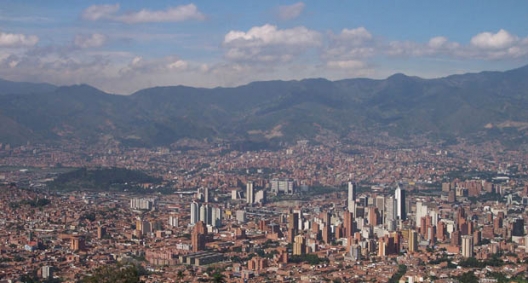 This week, Medellin, Colombia is hosting the World Urban Forum, the 7th iteration of the United Nation’s biannual conference series dedicated to the world’s cities. Some 25,000 people from everywhere on Earth are gathering at “WUF7” to discuss the governance challenges, and the unlimited opportunities, that are found in the world’s cities. The scale and color of this event demonstrates the power of the city to draw the interest of a vast range of people and organizations. National and local governments, intergovernmental organizations such as the UN and World Bank, NGOs, technology companies, and civil society organizations are all here to discuss, debate, show off accomplishments, and network.
This week, Medellin, Colombia is hosting the World Urban Forum, the 7th iteration of the United Nation’s biannual conference series dedicated to the world’s cities. Some 25,000 people from everywhere on Earth are gathering at “WUF7” to discuss the governance challenges, and the unlimited opportunities, that are found in the world’s cities. The scale and color of this event demonstrates the power of the city to draw the interest of a vast range of people and organizations. National and local governments, intergovernmental organizations such as the UN and World Bank, NGOs, technology companies, and civil society organizations are all here to discuss, debate, show off accomplishments, and network.
This event drives home basic points about how dynamic, interconnected, and competitive our world really is. While individuals, organizations, cities, and countries all are here to share insights, many are here to jockey for recognition as a global leader. The host city, Medellin, is itself the best example. The UN selected Medellin for its dramatic transformation, from a city known best for its drug-fueled violence to one now more famous for its safety, spectacular public architecture, policy innovation, and good governance. In two decades, Medellin has gone from laggard to leader, a stunning turnaround that now positions the city to compete on a world stage.
This insight leads me to a final point, about US leadership. The US delegation, on which I sit, is more than ably led by US Department of Housing and Urban Development Secretary Shaun Donovan and the US Permanent Representative to the Organization of American States, Carmen Lomellin. But despite their strong leadership and the important participation of American philanthropies and NGOs at WUF7, the US presence in Medellin does not reflect the fullest extent of American power. Other countries, including Germany, France, and Sweden, have spent considerable effort to make a compelling case for their countries’ leadership, through gorgeous national pavilions featuring round-the-clock events. This is a form of soft power, brilliantly applied for the world to see.The US has no such pavilion, thus it cannot show off prominent American accomplishments, themes, or people. A handful of prominent cities have also done the same thing. Barcelona and Bogota, for example, have pavilions as large, bright, and modern as any country here, an illustration of how leading-edge cities understand that they too are important actors having a global reach. American cities are absent, at least in this highly visible sense.
It is not entirely clear why the US is reluctant to play along. My suspicion, for both the US government and American cities, is that the answer is largely political, that investing in such high-profile fashion would be perceived as a boondoggle back home. This is too bad, for we do have much to share with the world when it comes to cities, we are as a matter of fact world leaders, and the return on our investment would be more than worth it. The twenty-first century is a competitive sport that we ignore at our peril. Fielding winning entries is very much about competing on big global stages like this one.
Peter Engelke is a Senior Fellow with the Atlantic Council’s Strategic Foresight Initiative.
Image: Medellin, Colombia
